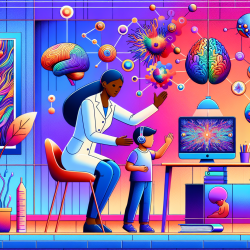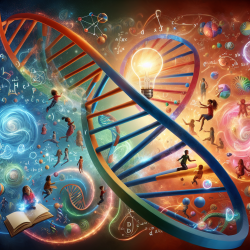Introduction to the Intense World Theory
The Intense World Theory, proposed by Kamila and Henry Markram, offers a comprehensive explanation for the neurobiological underpinnings of autism. It suggests that autism is characterized by hyper-functioning of local neural microcircuits, leading to hyper-reactivity and hyper-plasticity. This theory provides a framework for understanding the core cognitive consequences of autism, including hyper-perception, hyper-attention, hyper-memory, and hyper-emotionality.
Key Findings from the Research
The Intense World Theory emphasizes the role of the neocortex and amygdala in autism. Hyper-functioning in these areas results in heightened sensitivity to sensory stimuli, leading to sensory overload and withdrawal behaviors. The theory also highlights the potential for exceptional talents in individuals with autism due to enhanced memory and attention capabilities.
Research using the valproic acid (VPA) rat model of autism has shown that VPA-exposed animals exhibit amplified fear processing and memories, suggesting that fragments of the world can become emotionally aversive and be stored excessively. This provides a cellular and circuit explanation for how an autistic brain could be easily trapped in a painfully intense world.
Implications for Practitioners
For practitioners, understanding the Intense World Theory can enhance therapeutic approaches. Here are some ways to apply these insights:
- Personalized Therapy: Recognize the unique sensory sensitivities and cognitive strengths of each individual. Tailor interventions to manage sensory overload and leverage areas of strength.
- Environment Modification: Create a calming and predictable environment to minimize sensory overload and emotional distress. Gradually introduce new stimuli to avoid overwhelming the individual.
- Focus on Emotional Regulation: Implement strategies that help individuals manage heightened emotional responses, such as mindfulness and relaxation techniques.
- Encourage Research and Collaboration: Stay informed about ongoing research and collaborate with other professionals to develop innovative therapeutic approaches based on emerging findings.
Encouraging Further Research
Practitioners are encouraged to delve deeper into the Intense World Theory and its applications. Further research can explore the molecular and cellular mechanisms underlying hyper-functionality in autism and develop targeted interventions.
Conclusion
The Intense World Theory provides a valuable perspective for understanding autism and tailoring therapeutic approaches. By recognizing the unique sensory and cognitive profiles of individuals with autism, practitioners can enhance their therapeutic strategies and improve outcomes.
To read the original research paper, please follow this link: The Intense World Theory – A Unifying Theory of the Neurobiology of Autism.










